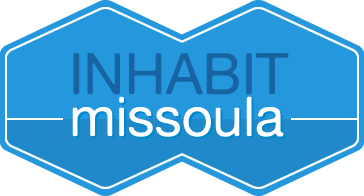I have a client who has been looking for a first home, and struggling to find a home that fits within his budget. After meeting with a couple different lenders, and learning his comfortable monthly payment only brought him to an approximate $120,000 – $130,000 purchase price (and the payment for this loan was beyond his comfort level), he began looking into getting a loan with rural development in Missoula County. Rural development loans are available in Missoula County for areas not annexed into the City, and currently those areas include East Missoula, Clinton, Lolo, portions of the Canyon Creek Development on the North end of Missoula, and other portions scattered around the edges of Missoula. I thought it might be useful for others who may be in the same situation to know what may be available to them.
 In this particular scenario, my client currently earns $30,500 per year (about $14.65 per hour). Other monthly expenses include student loan payments, car payment and credit card payment. In this particular situation, he qualifies for an approximate sales price of $180,500 (maximum purchase price) with this program. The interest rate is quoted at 4.875%, and his monthly payment, including only the principal and interest is approximately $535. The payment including taxes and home insurance would be approximately $727. (The estimated figure used for property taxes were $1,800 per year, and home insurance of $500 per year.)
In this particular scenario, my client currently earns $30,500 per year (about $14.65 per hour). Other monthly expenses include student loan payments, car payment and credit card payment. In this particular situation, he qualifies for an approximate sales price of $180,500 (maximum purchase price) with this program. The interest rate is quoted at 4.875%, and his monthly payment, including only the principal and interest is approximately $535. The payment including taxes and home insurance would be approximately $727. (The estimated figure used for property taxes were $1,800 per year, and home insurance of $500 per year.)
So, how does this work and remain affordable for the borrower? Essentially there is a portion of the payment that is subsidized by the government each month. In this example, the subsidy totals $382 per month, and the amounts are based on income, number of people in the family, credit score, etc. When a person with a Rural Development loan sells the home, this amount can become due. However, very generally speaking, the longer a purchaser stays in the home, the more likely some of this amount can be written off. It is also important to note that sometimes a purchaser can get into a loan such as this, and after 5 years they may just break even after paying back the subsidy. For example, with a subsidy similar to this scenario, there is approximately $4,600 per year in subsidy, which amounts to $23,000 in 5 years. All of these pieces need to be examined before going forward to make sure the program works best for the borrower.
The above figures are all based on only obtaining a loan with rural development, and no money from any other sources. There is a potential of receiving some additional down-payment money with other organizations. However, this year many of those programs have run low on funds. There is a chance that more funding could be forthcoming, but there is also a chance that it will not be. In this situation, my client wants to take advantage of the first time homebuyer tax credit, and does not want to close past the deadline for receiving those funds. It is also important to note that obtaining a Rural Development loan requires that borrowers enroll and complete the home WORD class (see www.homeword.org). In addition, keep in mind that the Rural Development program could, potentially, also run out of funding. Currently it is still available to qualified borrowers.
Although very vague, the above situation might help you, or someone you know, with opening some doors to possibilities with home ownership.

Leave a Reply